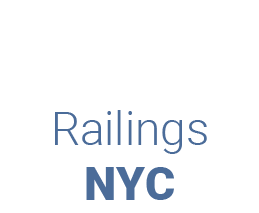Blog
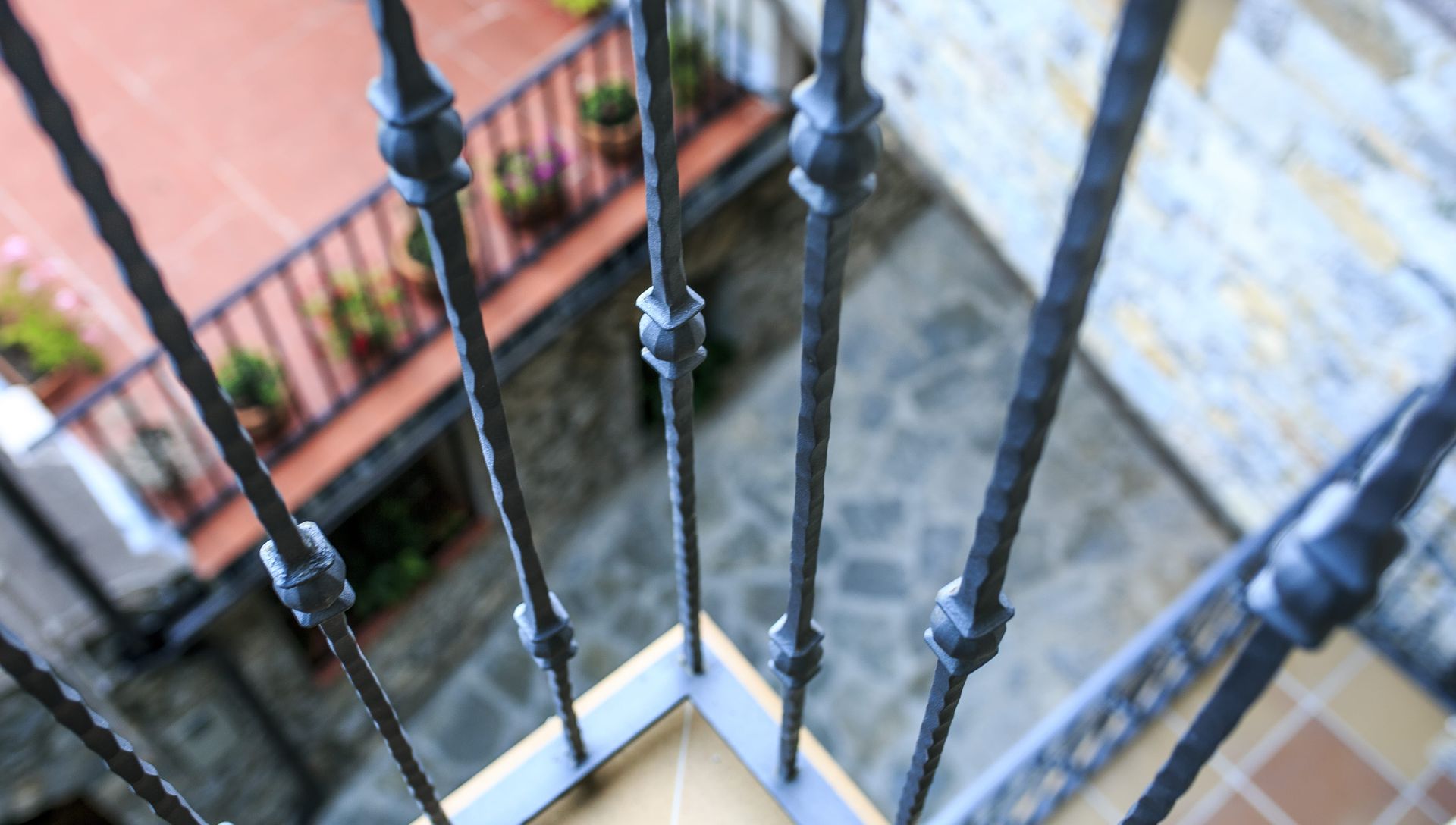
September 12, 2024
Handrails are essential components in public spaces, serving a dual purpose of ensuring safety and enhancing the aesthetic appeal of the environment. Whether in parks, commercial buildings, transportation hubs, or cultural institutions, handrails are more than mere functional elements—they are integral to the overall experience of the space. In this blog, we will analyze the importance of handrails in public areas, focusing on how they meet stringent safety standards while also complementing the design of the space. Safety: The Primary Function of Handrails The primary purpose of handrails in public spaces is to provide safety. They offer support and stability, particularly in areas with stairs, ramps, or uneven surfaces, helping to prevent falls and accidents. In crowded public spaces, the presence of handrails is critical to ensuring the safe movement of large numbers of people, particularly during emergencies or peak usage times. Handrails must comply with rigorous safety standards set by building codes and regulations. These standards dictate specifics such as the height, diameter, and strength of handrails to ensure they can adequately support users. For example, the Americans with Disabilities Act (ADA) specifies that handrails must be continuous along the length of stairs or ramps, extend beyond the top and bottom landings, and be mounted at a height that is accessible to both adults and children. The ADA also requires that handrails have a shape and surface that is easy to grip, ensuring they can be used effectively by everyone, including those with disabilities. The materials used in handrails play a significant role in their safety. Durable materials such as stainless steel, aluminum, and tempered glass are often chosen for their strength, resistance to wear and tear, and ability to withstand various weather conditions. These materials ensure that handrails remain reliable and safe over time, even in outdoor or high-traffic environments. Accessibility: Ensuring Inclusivity In addition to safety, handrails in public spaces must be designed with accessibility in mind. Accessible handrails make it easier for everyone, including the elderly, people with disabilities, and those with temporary mobility issues, to navigate public spaces safely and independently. The ADA provides detailed guidelines for the design of accessible handrails. These guidelines include specifications for handrail height, grip size, and the requirement for handrails to be installed on both sides of stairs or ramps. Handrails should also have a continuous surface to allow for an uninterrupted grip along the entire length, and they must be free of sharp edges or projections that could cause injury. For visually impaired individuals, adding tactile features such as braille or raised patterns to handrails can enhance accessibility. These features provide essential information, such as floor numbers or directional cues, making it easier for users to navigate unfamiliar spaces. In addition, the use of contrasting colors or finishes can help handrails stand out visually, making them easier to locate for those with limited vision. Design: Integrating Aesthetics and Function While safety and accessibility are paramount, the design of handrails should not be overlooked. Handrails are often highly visible elements in public spaces, and they can significantly impact the overall aesthetic of the environment. The challenge is to create handrails that meet safety and accessibility standards while also contributing to the visual appeal of the space. Modern handrails come in a wide range of materials, finishes, and styles, allowing designers to select options that complement the architectural theme of the space. For instance, sleek stainless steel handrails can provide a contemporary look that aligns with modern architectural styles, while wooden handrails can add warmth and texture, enhancing the natural feel of the space. Tempered glass handrails are popular in public spaces where visibility and openness are important. These handrails offer an unobstructed view while still providing the necessary support and safety features. Glass railings can be paired with metal or wood accents to create a custom look that matches the overall design scheme. In historic or culturally significant spaces, handrails can be designed to reflect the architectural details of the period, ensuring they blend seamlessly with the environment. Custom designs, such as wrought iron railings with intricate patterns, can add a touch of elegance and help preserve the character of the space. Balancing the Three Elements Balancing safety, accessibility, and design in public handrails requires careful planning and collaboration among architects, designers, and engineers. It is essential to select materials and designs that not only comply with regulatory standards but also enhance the user experience and contribute to the overall aesthetic of the space. At Railings NYC, we specialize in creating handrail solutions that achieve this balance. Our team understands the importance of adhering to safety and accessibility regulations while also delivering designs that complement the architectural vision of the space. Whether you need a sleek, modern handrail for a new public building or a custom-designed railing for a historic site, we are committed to providing solutions that meet the highest standards of safety, accessibility, and design. Conclusion Handrails in public spaces are crucial for ensuring safety and accessibility while also playing a significant role in the overall design of the environment. By carefully considering materials, design, and regulatory requirements, handrails can be crafted to meet the needs of all users, making public spaces safer, more accessible, and visually appealing. At Railings NYC, we are dedicated to providing handrail solutions that strike the perfect balance between these essential elements.
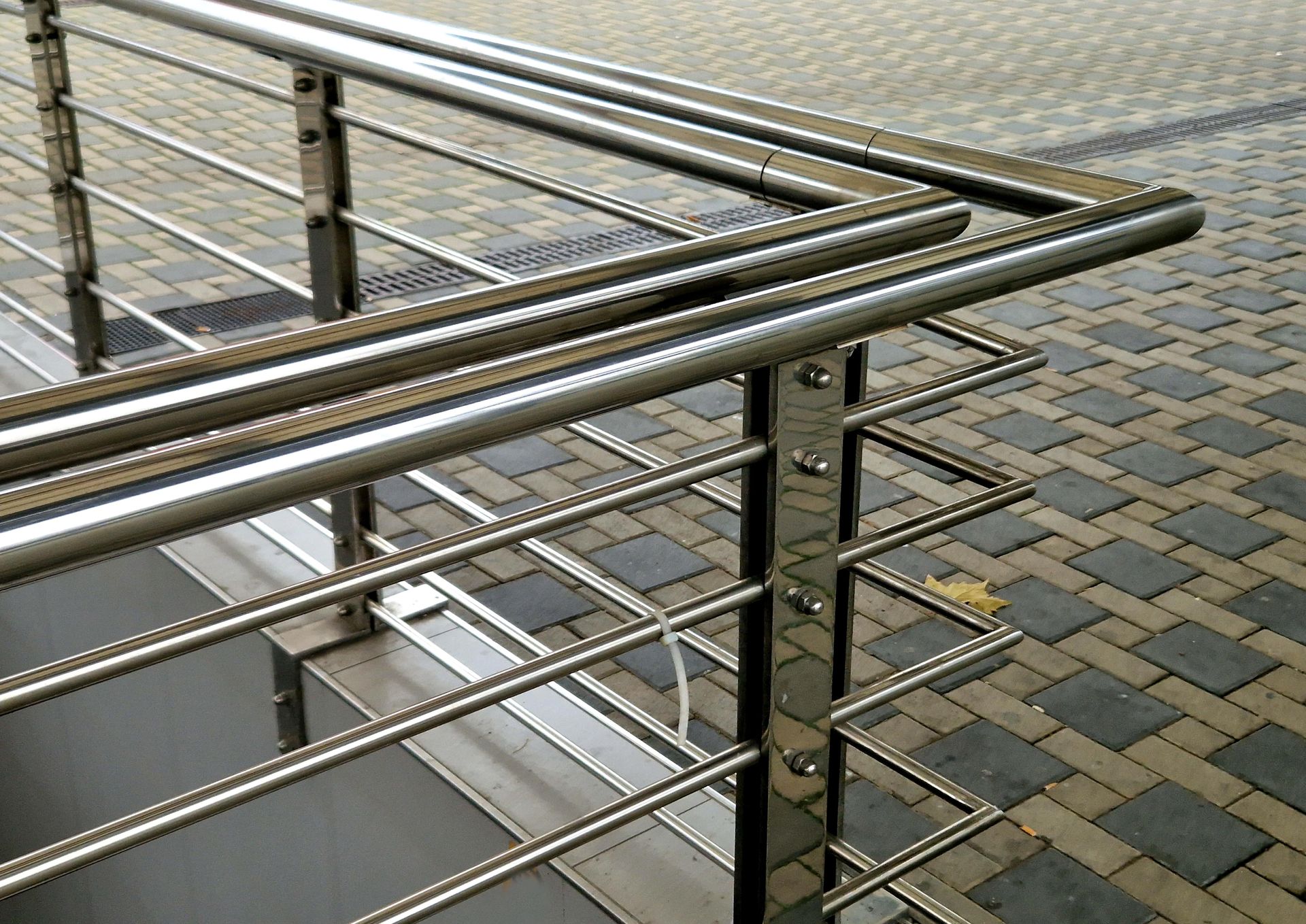
September 5, 2024
Handrails are an integral part of modern architecture, offering both safety and aesthetic value. However, their origins date back thousands of years, evolving from simple safety measures in ancient times to the sophisticated designs we see today. This blog takes a historical journey through the evolution of handrails, tracing their development from early civilizations to contemporary design. Handrails in Ancient Architecture The concept of handrails can be traced back to ancient civilizations, where they were primarily functional, designed to assist in climbing steps and navigating difficult terrain. The Egyptians, known for their monumental architecture, likely used basic forms of railings in their grand structures. These early railings were typically carved from stone or wood and integrated into the architecture of temples and palaces. The Greeks and Romans advanced the use of handrails, particularly in public buildings like theaters, amphitheaters, and baths. The Romans, with their engineering prowess, introduced more sophisticated railing designs. In the Colosseum, for example, stone railings were used to guide crowds through the structure safely. These railings were functional, yet they also reflected the architectural grandeur of the era, often adorned with carvings and decorative elements. The Middle Ages and Renaissance: Handrails as a Symbol of Status During the Middle Ages, handrails became more prevalent in castles and cathedrals across Europe. Stone and wooden railings were commonly used in spiral staircases, providing safety in the often narrow and steep passages of medieval fortifications. The design of handrails during this period was relatively simple, but their placement in prominent structures like castles and cathedrals began to signify status and wealth. The Renaissance period marked a significant evolution in handrail design, driven by the era's emphasis on art, architecture, and innovation. Railings became more ornate, often crafted from wrought iron and adorned with intricate patterns and motifs. In grand staircases of palaces and mansions, handrails were not only functional but also key elements of the overall aesthetic, showcasing the skill of artisans and the wealth of the owners. The Industrial Revolution: The Birth of Modern Handrails The Industrial Revolution in the 18th and 19th centuries brought about dramatic changes in architecture and construction. With the advent of new materials like cast iron and steel, handrails became more durable and versatile. The mass production of iron railings made them more accessible, allowing for widespread use in both public and private buildings. Victorian architecture, characterized by its ornate and intricate designs, saw the introduction of highly decorative iron railings. These handrails were often elaborate, featuring scrollwork, floral patterns, and other intricate details that reflected the aesthetic preferences of the era. This period also marked the beginning of standardized handrail designs, which were manufactured in factories and shipped to construction sites, a stark contrast to the handcrafted railings of previous centuries. 20th Century to Present: The Fusion of Function and Form The 20th century saw a shift towards more minimalist and functional handrail designs, influenced by the modernist architectural movement. Architects like Le Corbusier and Ludwig Mies van der Rohe championed the use of simple, clean lines, and this approach extended to handrails. Steel and glass became popular materials, reflecting the modernist emphasis on transparency and structural integrity. In the latter half of the 20th century, the introduction of materials like stainless steel, aluminum, and tempered glass revolutionized handrail design. These materials allowed for sleek, streamlined designs that complemented the emerging trends in contemporary architecture. The emphasis shifted towards creating handrails that were both functional and visually unobtrusive, seamlessly integrating with the overall design of the building. Today, handrails are designed not only for safety but also as key elements of architectural expression. Advances in technology have enabled the creation of handrails that are both innovative and sustainable, using materials such as recycled metals and composite materials. Contemporary designs often feature handrails that are minimalist in appearance but complex in their engineering, reflecting the fusion of form and function that defines modern architecture. Conclusion The evolution of handrails is a testament to the intersection of safety, functionality, and design in architecture. From the rudimentary stone and wood railings of ancient times to the cutting-edge designs of today, handrails have continually adapted to the changing needs and aesthetics of each era. At Railings NYC, we honor this rich history by offering handrail solutions that blend timeless craftsmanship with modern innovation. Whether you're looking for a classic design or a contemporary statement piece, our handrails are designed to enhance both the safety and beauty of your space.
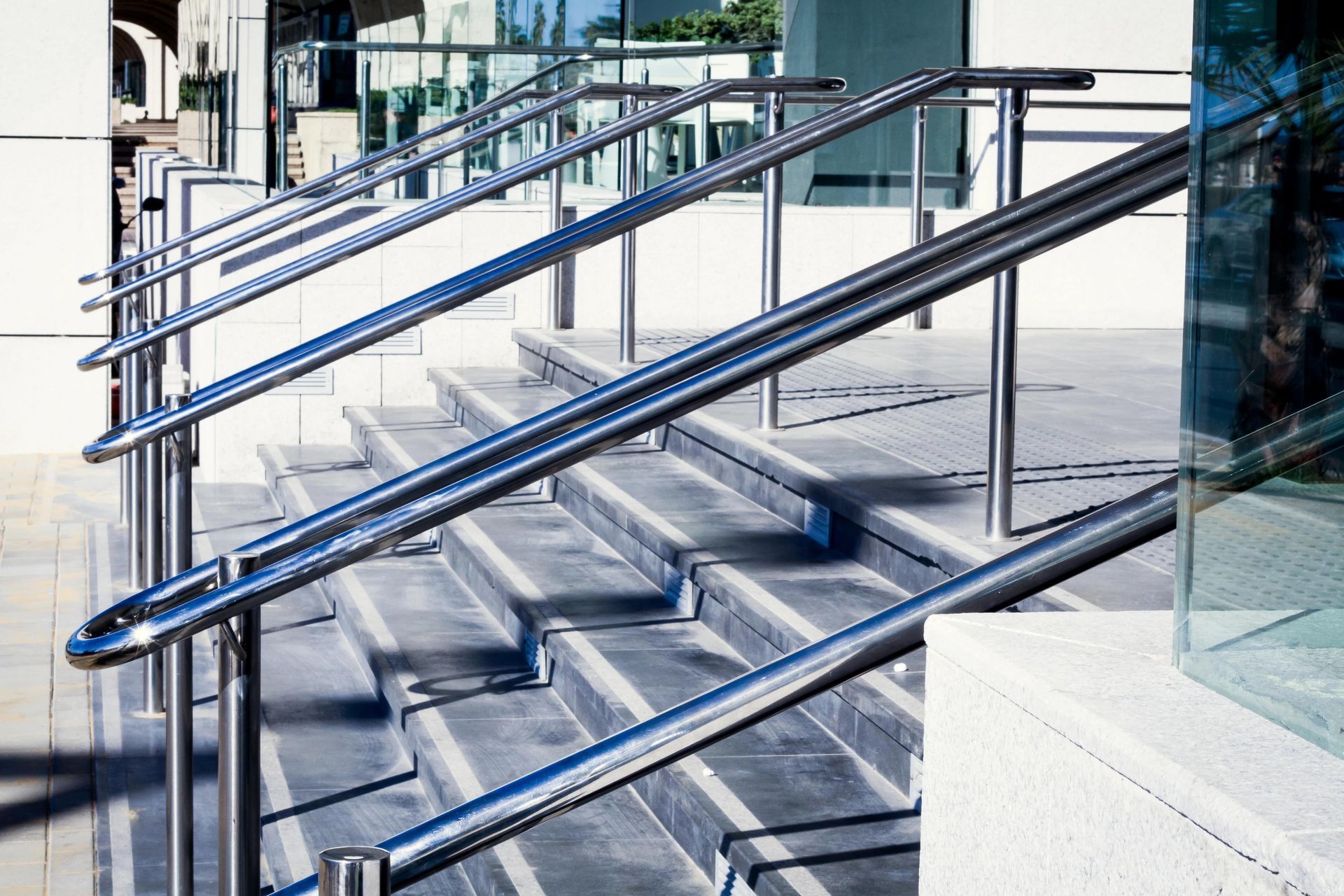
August 29, 2024
As the world shifts towards more sustainable living, the construction industry is also evolving to incorporate eco-friendly practices and materials. This shift is not limited to the major components of a building; even smaller elements like handrails are now being designed with sustainability in mind. Handrails, often overlooked, can play a significant role in reducing the environmental footprint of a building. In this blog, we’ll explore the eco-friendly materials and practices that are shaping the future of sustainable handrails in modern construction. The Importance of Sustainable Handrails Sustainability in construction is not just a trend; it’s a necessity. As we become more aware of the environmental impact of our buildings, there is a growing demand for materials and practices that minimize harm to the planet. Handrails, as an integral part of both residential and commercial buildings, offer a unique opportunity to incorporate sustainable elements into the construction process. Choosing sustainable handrail materials and practices not only contributes to the overall environmental goals of a project but also enhances the building’s appeal to eco-conscious clients and occupants. Sustainable handrails can be durable, aesthetically pleasing, and environmentally friendly, making them a valuable addition to any modern construction project. Eco-Friendly Materials for Handrails One of the key ways to make handrails more sustainable is by selecting eco-friendly materials. Several materials stand out for their sustainability, durability, and visual appeal: 1. Recycled Metals: Metals like aluminum and steel are popular choices for handrails due to their strength and longevity. When sourced from recycled materials, these metals significantly reduce the environmental impact of handrail production. Recycled aluminum, for example, requires only 5% of the energy needed to produce new aluminum, making it a highly sustainable option. Steel, too, is one of the most recycled materials globally, and using recycled steel in handrails can greatly contribute to sustainability goals. 2. Sustainable Wood: Wooden handrails add warmth and elegance to a space, and when sourced sustainably, they can be an eco-friendly choice. Look for wood that is certified by the Forest Stewardship Council (FSC) or the Programme for the Endorsement of Forest Certification (PEFC). These certifications ensure that the wood is harvested responsibly, with minimal impact on the environment. Additionally, reclaimed wood from old buildings or other sources can be repurposed for handrails, giving new life to materials that might otherwise go to waste. 3. Bamboo: Bamboo is another excellent sustainable material for handrails. It’s a rapidly renewable resource, growing much faster than traditional hardwoods. Bamboo’s strength and durability make it suitable for handrails, and its natural aesthetic adds a unique touch to any space. Because bamboo regenerates quickly and requires minimal water and pesticides, it is an eco-friendly alternative to conventional wood. 4. Glass: Glass handrails, especially when made from recycled glass, offer a modern and sleek look while being sustainable. Recycled glass reduces the need for raw materials and energy-intensive manufacturing processes. Additionally, glass is fully recyclable, making it a sustainable option throughout its lifecycle. Tempered glass, known for its strength and safety, is often used in handrails and can be sourced with a high percentage of recycled content. Sustainable Practices in Handrail Installation In addition to choosing sustainable materials, the practices used in the installation and maintenance of handrails can also contribute to sustainability. Here are some eco-friendly practices to consider: 1. Local Sourcing: Using locally sourced materials for handrails reduces the carbon footprint associated with transportation. Local sourcing also supports the regional economy and often ensures that materials are suited to the local climate and conditions, enhancing the durability and sustainability of the handrails. 2. Low-VOC Finishes: The finishes applied to handrails can contain volatile organic compounds (VOCs) that are harmful to both the environment and human health. Opting for low-VOC or VOC-free finishes ensures that the handrails are not only sustainable but also safer for indoor air quality. These finishes are available in a variety of options, including stains, paints, and sealants that provide protection without the environmental cost. 3. Durable Design: Sustainability is also about longevity. Handrails designed for durability require less frequent replacement, reducing the need for additional materials and resources. Investing in high-quality materials and construction techniques ensures that the handrails will withstand wear and tear, further contributing to the overall sustainability of the building. Conclusion Sustainable handrails are a small but significant part of modern construction that aligns with broader environmental goals. By selecting eco-friendly materials like recycled metals, sustainable wood, bamboo, and recycled glass, and by implementing sustainable practices such as local sourcing and using low-VOC finishes, we can reduce the environmental impact of our buildings. At Railings NYC, we are committed to offering sustainable handrail solutions that not only meet safety and aesthetic standards but also contribute to a healthier planet. As we move forward, embracing sustainability in every aspect of construction, including handrails, will be key to creating a more sustainable future.
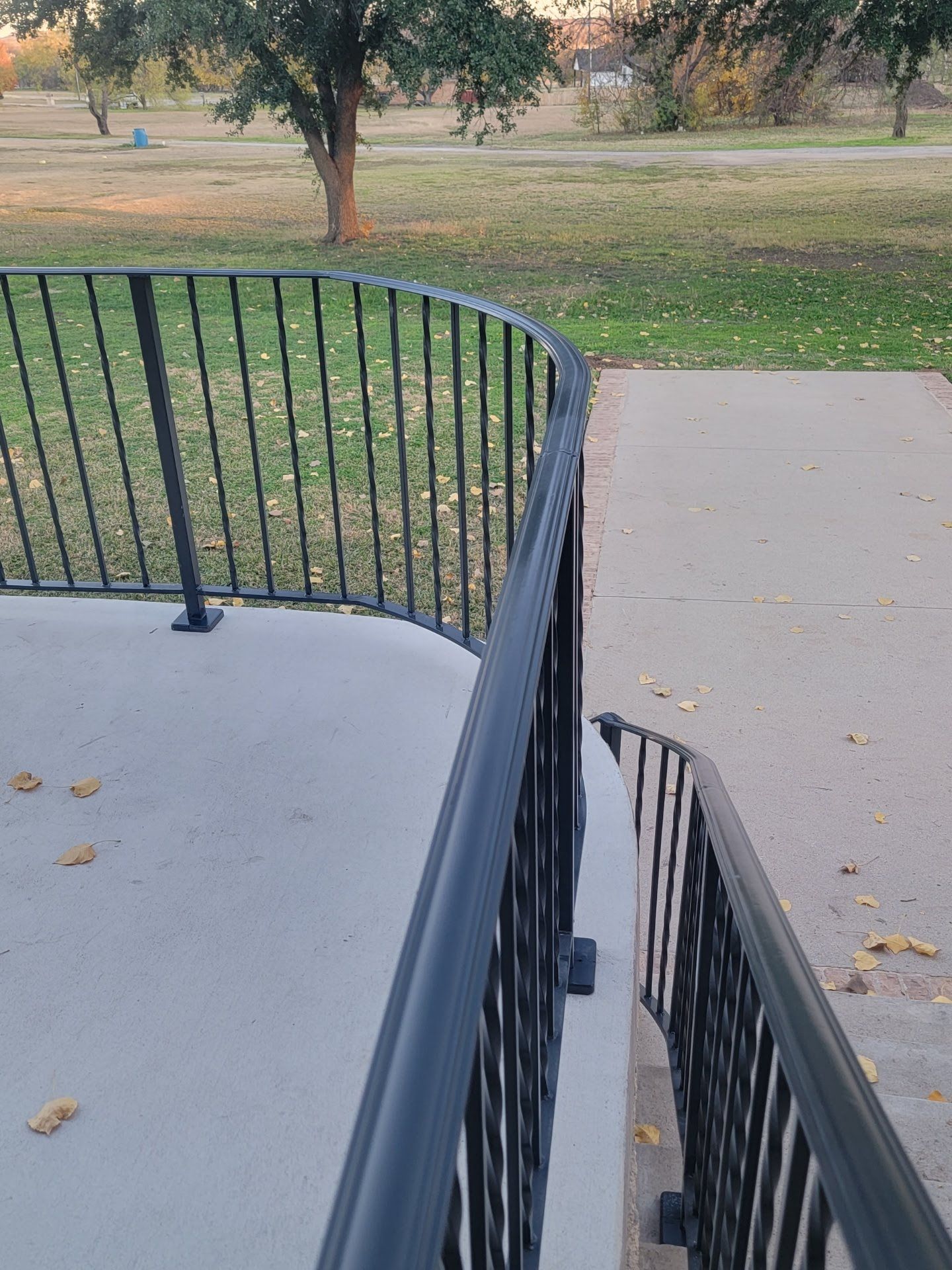
August 22, 2024
In today’s world, where urban living often means smaller living spaces, every square inch of a home must be thoughtfully designed. This necessity extends to elements that are often overlooked, like handrails. While their primary function is safety, handrails can also be a crucial design element, especially in small spaces. The challenge is to find handrail solutions that maximize functionality without sacrificing aesthetics. In this blog, we'll explore creative handrail options that cater specifically to small spaces, offering both safety and style. Minimalist Designs: Less is More When dealing with limited space, the adage "less is more" rings especially true. Minimalist handrail designs are perfect for small spaces because they take up minimal visual and physical space. Opting for slender, streamlined railings made of metal or glass can create a sense of openness, making the space feel larger than it actually is. Thin metal rails with simple geometric patterns or sleek glass panels that offer transparency can blend seamlessly with the surroundings, adding a touch of modern elegance. Multi-Functional Handrails: Double Duty Designs In small spaces, every element should serve more than one purpose. Multi-functional handrails are an excellent solution for compact areas. For example, handrails that double as storage units or shelves can provide much-needed functionality without adding clutter. Imagine a stairway railing that incorporates built-in shelving for books, decorative items, or even plants. This not only saves space but also adds character to the area, transforming a simple handrail into a focal point. Another creative approach is integrating handrails with lighting. Handrails embedded with LED lights can illuminate a staircase or hallway, enhancing safety while also serving as a design feature. This is particularly useful in tight spaces where additional lighting fixtures might be impractical. Space-Saving Materials: Lightweight and Versatile Choosing the right materials can make a significant difference in small spaces. Lightweight materials like aluminum, stainless steel, or acrylic are excellent choices for handrails in compact areas. These materials are not only durable but also visually light, preventing the space from feeling heavy or crowded. Acrylic handrails, for instance, offer a clear, almost invisible barrier that ensures safety without interrupting sightlines. This transparency can make a small space feel larger and more open. Alternatively, perforated metal handrails provide a unique texture and design while maintaining a lightweight and airy appearance. Spiral Staircases: Maximizing Vertical Space When floor space is limited, it’s essential to think vertically. Spiral staircases are a fantastic solution for small spaces as they take up significantly less floor area compared to traditional staircases. The handrails on spiral staircases can be a design feature in themselves. Opt for a continuous, smooth handrail that follows the curve of the stairs for a sleek, modern look. Pairing this with materials like wood or metal can create a striking contrast, adding visual interest without overwhelming the space. For a more artistic touch, consider a handrail with an intricate design that mirrors the spiral’s shape, enhancing the overall aesthetic while maintaining functionality. Customization: Tailoring to Your Space One of the best ways to maximize both functionality and aesthetics in small spaces is through customization. Custom handrails can be tailored to fit the unique dimensions and style of your space. Whether it's a curved railing for a winding staircase or a handrail with specific design elements that match your interior décor, customization allows you to create a handrail solution that perfectly fits your needs. Working with a professional, like Dallas Handrails, ensures that your handrail solution not only meets safety standards but also enhances the overall look of your space. Custom handrails can incorporate unique materials, finishes, and designs that make your small space feel personalized and cohesive. Conclusion In small spaces, every design element counts, and handrails are no exception. By opting for minimalist designs, multi-functional solutions, space-saving materials, and customized options, you can create handrail solutions that maximize both functionality and aesthetics. With the right approach, handrails can become more than just a safety feature—they can be a stylish and integral part of your small space design.
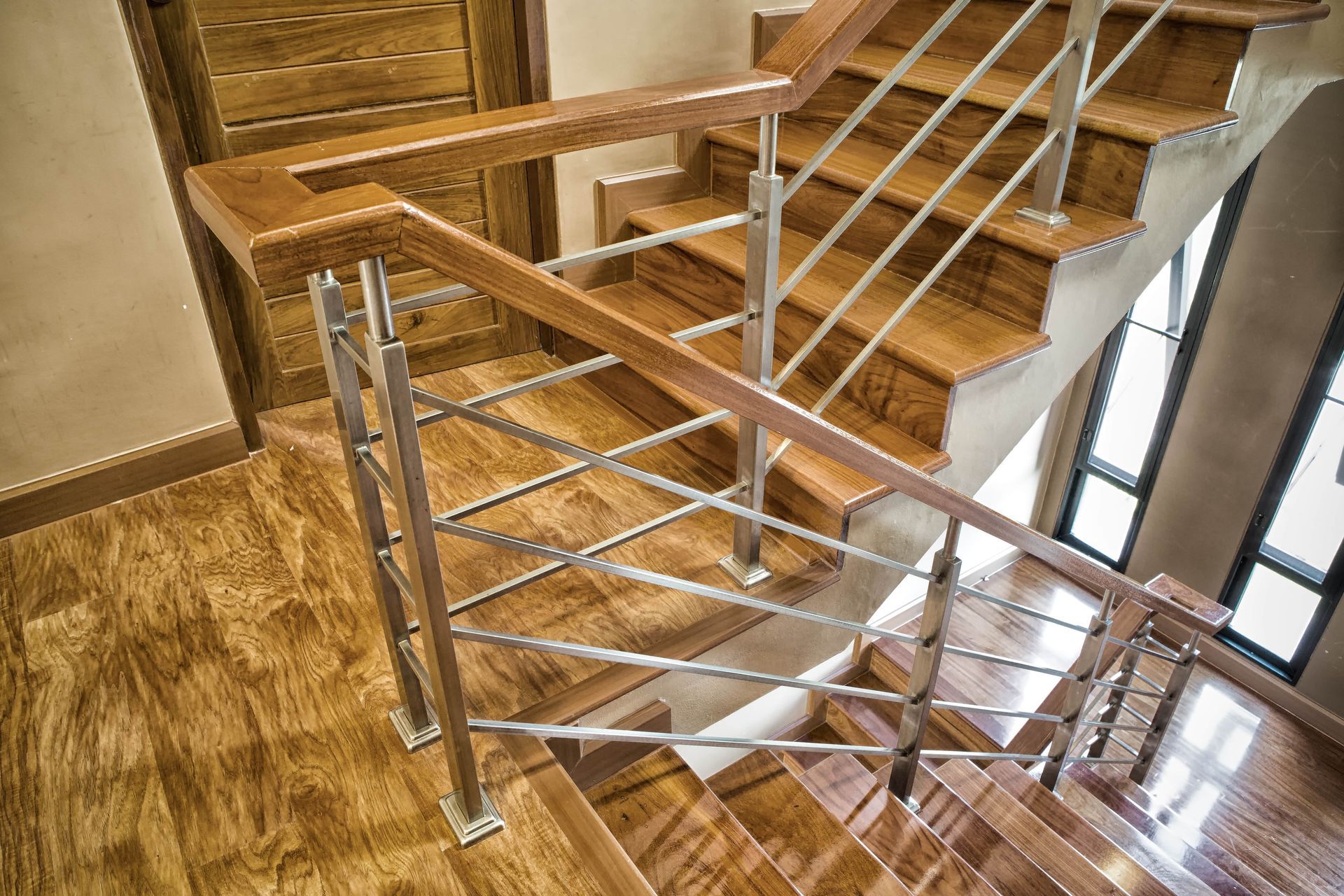
August 15, 2024
As a leading provider of custom handrail solutions in the New York City metro area, the team at Railings NYC understands the importance of ensuring our installations comply with the city's strict building code requirements. Proper adherence to local safety regulations is essential for protecting the wellbeing of residents and visitors alike. In this post, we'll dive into the key New York City building code standards for handrail height, gripping surfaces, strength, continuity, and more. By understanding these guidelines, homeowners, business owners, and property managers can work with our team to design and install a handrail system that not only enhances the aesthetics and accessibility of their property, but also meets the safety benchmarks set forth by the City of New York. Handrail Height According to the NYC building code, handrails must be installed between 34 and 38 inches above the surface of the stair treads or ramp. This height range is intended to provide comfortable and accessible gripping for users of all ages and statures. Our team carefully measures each project site to guarantee the final handrail placement falls within this specified zone. Handrail Gripping Surface The New York City building code has detailed requirements when it comes to the gripping surface of a handrail. The surface must be continuous, without interruption by newel posts or other obstructions. It must also feature a circular cross-section with an outside diameter between 1.25 and 2 inches - the ideal range for a secure, comfortable grip. Furthermore, there must be at least 1.5 inches of clearance between the handrail and any adjacent wall or surface. Handrail Strength Safety is paramount for any handrail installation, which is why the NYC building code has stringent strength requirements. Handrails must be able to withstand a concentrated load of 200 pounds applied in any direction at any point along the top of the rail. They must also be able to support a distributed load of 50 pounds per linear foot, also applied in any direction. Our team utilizes heavy-duty mounting hardware and specialized installation techniques to ensure every handrail meets or exceeds these strength standards. Handrail Continuity Continuous, uninterrupted handrails are essential for safe navigation, especially on stairs and ramps. The NYC code requires that handrails run the full length of the stairs or ramp, from the top riser to the bottom riser. They must also return to the wall, guard, or floor at each end, or terminate in a newel post. This seamless design helps users maintain a secure grip and consistent support as they ascend or descend. Additional Requirements Beyond the core elements above, the New York City building code has some additional handrail guidelines that our team closely follows: Handrails are required on at least one side of enclosed stairways with 4 or more risers. Ramps with a slope greater than 1:20 must have handrails on both sides. Handrails cannot project more than 4.5 inches into the required width of a stairway. Adhering to these detailed code requirements is essential for ensuring the safety and longevity of any handrail installation. At Railings NYC , we make it a priority to stay up-to-date on the latest local regulations and work closely with building inspectors to guarantee full compliance. When you partner with our team, you can have complete confidence that your new handrail system will not only elevate the look and accessibility of your property, but also meet the strict safety standards put in place by the City of New York. Contact us today to learn more about our custom handrail solutions and how we can help you navigate the building code requirements.
LET'S WORK TOGETHER
Hire us at
Railings NYC for exceptional craftsmanship and quality in all your railing needs. Our expert team specializes in custom wrought iron railings, ensuring safety, durability, and aesthetic appeal for both residential and commercial properties. Transform your space with our elegant and secure railing solutions.
QUICK LINKS
